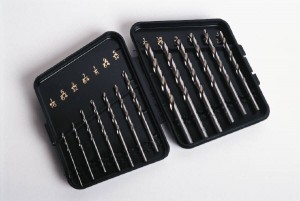 Do you know who your real competition is? It’s not who you think.
Do you know who your real competition is? It’s not who you think.
It isn’t the people who sell the same product or service you do. It isn’t even the people who sell products and services in the same general category as you.
Your competition is everything else your prospect could conceivably spend their money on.
It’s a concept economists call opportunity cost. And it’s vital you understand it, because it affects your sales. Here’s a simple illustration.
Let’s say you’re walking down the street in a retail area with ten dollars in your pocket. What could you do with that money? You could:
• See a movie
• Grab a couple of beers in a bar
• Buy a t-shirt
• Pick up a paperback at a bookstore
• Eat a fast-food meal
• Buy some drill bits for your toolbox
• Get your shoes shined
• Buy a pair of knockoff sunglasses from a sidewalk vendor
• Bowl a few frames
• Pay the cover fee to get into a dance club
You could do any of these things. But you can only do one of them. To spend your ten dollars on one of the above things means you’re giving up the opportunity to do any of the others.
Everything you’re giving up is your opportunity cost. It’s the combined value of all the things you can’t buy because you’ve spent your money on what you did buy.
So what will you buy? Whatever option has the lowest opportunity cost to you at the time. In other words, you’ll give up everything you value less than what you end up buying.
 If you’re starving, the restaurant will have the lowest opportunity cost because you’ll happily give up everything else to satisfy your hunger.
If you’re starving, the restaurant will have the lowest opportunity cost because you’ll happily give up everything else to satisfy your hunger.
If you’re not hungry, but you are in the middle of a home improvement project, the drill bits may have the lowest opportunity cost because your highest priority is to finish the project before your in-laws arrive.
Opportunity cost takes the concept of value and extends it, comparing the value of everything to everything else. It’s how people judge the relative value of the myriad ways they could possibly spend their limited time, energy and money.
If you’re going to send your kids to a private school, what other things will you not be able to buy? If your company spends money on a new computer system, what line items have to be cut back as a result?
Here’s what this means to you as a salesperson, CEO, business owner or professional:
 1. You need to rethink your idea of who your competitors are. In the above example, the hardware store is competing not just with other hardware stores, but with the restaurant, dance club, clothing store, movie theater, bowling alley and shoeshine guy.
1. You need to rethink your idea of who your competitors are. In the above example, the hardware store is competing not just with other hardware stores, but with the restaurant, dance club, clothing store, movie theater, bowling alley and shoeshine guy.
2. It’s crucial you learn everything you can about your prospects. Whether they’re individuals or organizations, you need to know what else is competing for their time, attention and money. What are their goals, needs, desires, fears, values and priorities?
3. Whatever you sell, you must persuade your prospects it’s the best possible use of their money. Everyone has a finite budget. (Some are larger than others, but they’re all finite.) To buy your product or service means they have to give up some other purchase they’d also like to make. You’ve got to make the case that your offering is more important to them than any other expenditure.
It’s not enough to be able to compete with others in your industry. Like it or not, you’re competing with everything and everybody. The better your marketing and sales efforts take that brutal fact into account, the better your sales will be.

Leave a comment